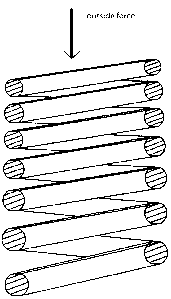Some of the information on this Web page has been provided by external sources. The Government of Canada is not responsible for the accuracy, reliability or currency of the information supplied by external sources. Users wishing to rely upon this information should consult directly with the source of the information. Content provided by external sources is not subject to official languages, privacy and accessibility requirements.
Any discrepancies in the text and image of the Claims and Abstract are due to differing posting times. Text of the Claims and Abstract are posted:
| (12) Patent Application: | (11) CA 2750672 |
|---|---|
| (54) English Title: | THINCKNESS INCREASE SPRING |
| (54) French Title: | RESSORT A EPAISSEUR AMELIOREE |
| Status: | Deemed Abandoned and Beyond the Period of Reinstatement - Pending Response to Notice of Disregarded Communication |
| (51) International Patent Classification (IPC): |
|
|---|---|
| (72) Inventors : |
|
| (73) Owners : |
|
| (71) Applicants : |
|
| (74) Agent: | |
| (74) Associate agent: | |
| (45) Issued: | |
| (22) Filed Date: | 2011-08-25 |
| (41) Open to Public Inspection: | 2012-03-13 |
| Examination requested: | 2013-01-28 |
| Availability of licence: | N/A |
| Dedicated to the Public: | N/A |
| (25) Language of filing: | English |
| Patent Cooperation Treaty (PCT): | No |
|---|
| (30) Application Priority Data: | None |
|---|
Generally the area of the spring's cross section increases from one end to the
other. (Or
decrease if you
start to look from the other end.) It's geting thicker. Therefore the spring
has a variable
rate(lb/in), which increases from the weaker end to the stronger end, and is
linear to the
area of the cross section. And it will be used under compression only.
Note: Claims are shown in the official language in which they were submitted.
Note: Descriptions are shown in the official language in which they were submitted.

2024-08-01:As part of the Next Generation Patents (NGP) transition, the Canadian Patents Database (CPD) now contains a more detailed Event History, which replicates the Event Log of our new back-office solution.
Please note that "Inactive:" events refers to events no longer in use in our new back-office solution.
For a clearer understanding of the status of the application/patent presented on this page, the site Disclaimer , as well as the definitions for Patent , Event History , Maintenance Fee and Payment History should be consulted.
| Description | Date |
|---|---|
| Time Limit for Reversal Expired | 2014-08-26 |
| Application Not Reinstated by Deadline | 2014-08-26 |
| Inactive: Office letter | 2013-11-07 |
| Refund Request Received | 2013-11-04 |
| Inactive: Delete abandonment | 2013-10-28 |
| Inactive: Office letter | 2013-09-25 |
| Inactive: Correspondence - Formalities | 2013-09-20 |
| Deemed Abandoned - Failure to Respond to Maintenance Fee Notice | 2013-08-26 |
| Deemed Abandoned - Failure to Respond to Maintenance Fee Notice | 2013-08-26 |
| Amendment Received - Voluntary Amendment | 2013-05-14 |
| Amendment Received - Voluntary Amendment | 2013-04-03 |
| Amendment Received - Voluntary Amendment | 2013-04-02 |
| Inactive: Office letter | 2013-03-20 |
| Inactive: Correspondence - Formalities | 2013-03-14 |
| Amendment Received - Voluntary Amendment | 2013-03-07 |
| Amendment Received - Voluntary Amendment | 2013-03-07 |
| Inactive: Office letter | 2013-03-01 |
| Amendment Received - Voluntary Amendment | 2013-02-18 |
| Amendment Received - Voluntary Amendment | 2013-02-14 |
| Inactive: Office letter | 2013-02-04 |
| Letter Sent | 2013-02-04 |
| Request for Examination Requirements Determined Compliant | 2013-01-28 |
| Request for Examination Received | 2013-01-28 |
| All Requirements for Examination Determined Compliant | 2013-01-28 |
| Amendment Received - Voluntary Amendment | 2013-01-23 |
| Inactive: Correspondence - Prosecution | 2012-08-07 |
| Amendment Received - Voluntary Amendment | 2012-06-19 |
| Amendment Received - Voluntary Amendment | 2012-05-29 |
| Change of Address Requirements Determined Compliant | 2012-05-25 |
| Inactive: Office letter | 2012-05-25 |
| Change of Address or Method of Correspondence Request Received | 2012-05-07 |
| Application Published (Open to Public Inspection) | 2012-03-13 |
| Inactive: Cover page published | 2012-03-12 |
| Amendment Received - Voluntary Amendment | 2012-02-28 |
| Inactive: Office letter | 2012-01-17 |
| Early Laid Open Requested | 2011-12-22 |
| Inactive: Office letter | 2011-11-10 |
| Inactive: Withdraw application | 2011-11-01 |
| Inactive: IPC assigned | 2011-09-30 |
| Inactive: First IPC assigned | 2011-09-30 |
| Inactive: IPC assigned | 2011-09-30 |
| Application Received - Regular National | 2011-09-12 |
| Inactive: Filing certificate - No RFE (English) | 2011-09-12 |
| Small Entity Declaration Determined Compliant | 2011-08-25 |
| Abandonment Date | Reason | Reinstatement Date |
|---|---|---|
| 2013-08-26 | ||
| 2013-08-26 |
| Fee Type | Anniversary Year | Due Date | Paid Date |
|---|---|---|---|
| Application fee - small | 2011-08-25 | ||
| Request for examination - small | 2013-01-28 |
Note: Records showing the ownership history in alphabetical order.
| Current Owners on Record |
|---|
| CHRISTINA X. DAI |
| Past Owners on Record |
|---|
| None |